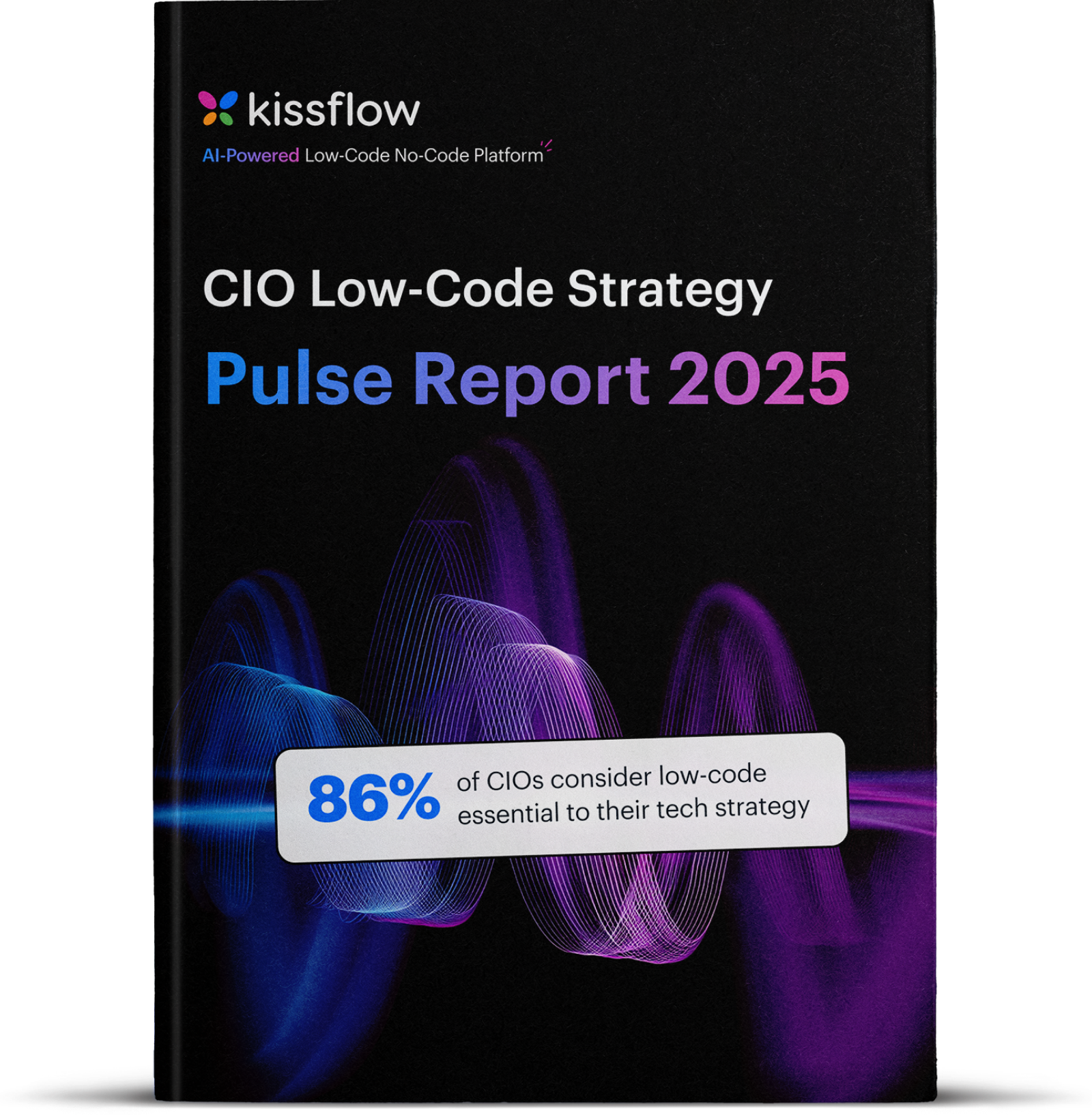
- >
- Retail>
- Automating refund approvals for faster customer resolutions in retail
Automating refund approvals for faster customer resolutions in retail
Picture a customer who buys the perfect dress online for a big event. The dress arrives, but the fit isn't right. She quickly requests a return, hoping for a prompt solution. Days pass while her refund sits in limbo, and she starts to wonder if she made the right choice shopping with your brand. Meanwhile, your customer service team sorts through a mountain of similar refund requests, each following the same pattern and slowing down under the weight. It's a story retailers see daily: a cycle of frustration for customers and employees.
In e-commerce, return rates now average around twenty percent, double what you see in stores. Shopping habits have shifted, but many retail operations still rely on outdated, manual refund processes. That gap between customer expectations and operational reality breeds stress, delays, and unnecessary costs.
Where manual refunds break down
Returns have become an everyday part of retail, especially in omnichannel businesses. But while customers expect speed and simplicity, retailers face rising hidden costs and labor-intensive manual steps that make every return slower and more expensive than it should be.
Return volumes keep rising
Online shopping changed the game completely. Customers see free, easy returns as standard service now. Manual refund processes, designed for a different era, struggle to keep up with current demands. The result? Over $323.7 billion lost to returns each year. Support teams get overwhelmed, and customers face longer waits than they ever signed up for.
Manual approval chains slow everything down
Every refund passes through a maze of approvals. Service agents review the claim, escalate it to managers, and then hand it off to finance. Each step adds more delay and room for error. During seasonal peaks, these delays multiply, leaving both customers and teams stuck waiting for resolution.
Inconsistent exception handling leads to lost revenue
Without a clear system, approvals depend on who happens to review each case. One agent says yes, another says no, and customers are left guessing what to expect. This inconsistency opens the door to lost revenue and leaves policies open to interpretation.
Manual systems can't keep up as you scale
A manual workflow might handle a few hundred returns a week, but that model falls apart at a thousand. Teams feel the strain, response times stretch even further, and customer satisfaction drops off significantly.
Learn more: From Prediction to Action: Connecting Forecast Models to Inventory Workflows
Build order and efficiency with automated refund workflows
Returns aren't going away, but the way you manage them can change dramatically. When retailers implement refund approval automation, bottlenecks disappear and everyone benefits from streamlined processes.
Centralize every return, from every channel
Today's customers buy online, in apps, social media, and stores. Return and refund automation pulls refund requests from all these channels into one system. Whether an item is bought online and returned in-store or vice versa, each request moves through a unified, connected process.
Define clear rules for instant approvals
When you spell out what qualifies for automatic approval (say, low-value items, returns within policy windows, or products in original packaging), routine refunds can move forward instantly, without manual review. Customers get quick answers and labels without waiting for someone to click "approve."
Get Started: Approval Management Software
Route exceptions with context, not confusion
Not every case is cut and dried. E-commerce refund workflow automation identifies exceptions like damaged goods, unusual orders, or policy edge cases and routes them straight to the right person with all the relevant information attached. That way, specialists spend time on real issues, not sorting routine requests.
Full transparency, every step of the way
Automated systems mark each stage of a return with timestamps and updates, so you always know where things stand. Refund SLA tracking highlights bottlenecks, and data from the workflow shows where processes can improve over time.
A complete view of your returns landscape
Centralized, automated workflows give leaders end-to-end visibility. You can analyze returns by product, season, customer segment, or channel. Spotting trends gets easier, helping you refine descriptions, update size charts, or make smarter inventory calls.
— McKinsey & Company, “Retail Speaks: Seven Imperatives for the Industry”
Kissflow: automation that grows with your business
Kissflow takes disjointed, manual refund processes and turns them into a connected, automated flow ready to scale as your business grows.
Templates that work for every type of return
Kissflow offers customizable templates for every return scenario. Teams capture the right information every time, whether it's a damaged item, sizing complaint, or customer preference issue. There's no ambiguity, just a reliable, step-by-step process.
Real-time integration with your core systems
API-based order validation lets Kissflow instantly check customer and order details against your e-commerce platform or point-of-sale system. No more switching tabs or keying in data by hand. Everything works together automatically.
Business rules do the heavy lifting
Return approval process optimization works through clearly defined rules based on customer loyalty, item value, purchase date, or policy compliance. Standard refunds are handled automatically, while complex or high-value cases, complete with all the supporting data, are routed for review.
Dashboards that turn process into performance
Leaders get actionable, real-time insights with Kissflow dashboards. Average resolution times, approval rates, and customer satisfaction (CSAT) metrics appear in one place. It's easy to spot emerging issues and address them before they grow.
Full audit trails for every decision
Every action, approval, or note is logged automatically. If questions come up (internally or from customers), teams can see exactly what happened, when, and why. This supports compliance, fast dispute resolution, and ongoing process improvement.
Real business impact
Refund approval automation delivers measurable benefits across your operation, transforming how teams handle returns and improving customer relationships.
Faster refunds build loyalty
Automating returns processes can significantly reduce both the number of support tickets and the time it takes to process refunds. Customers get answers and money back quickly, reducing frustration and increasing loyalty. The impact extends beyond processing speed: automated returns and refund systems reduce manual tasks, minimize errors, and streamline workflows, freeing staff to focus on more complex issues. Faster service translates to repeat purchases and better word of mouth.
Consistent, policy-driven refunds protect your margins
Automation ensures that return rules are followed every time. There are no more random approvals or denials that cost money and trust. Every refund is handled fairly and predictably, safeguarding both revenue and reputation.
Unified experience across every store and channel
Retailers with multiple locations or regional teams often struggle with inconsistent policies. Automated workflows keep everything aligned, so no matter where your customers shop, they experience the same reliable, high-quality process.
Trust and retention, proven by the numbers
Customers trust brands that handle returns quickly and fairly. A Customer Satisfaction (CSAT) score above seventy percent[2] signals strong customer relationships, as noted by Salesforce. Scores that fall below fifty percent often signal a heightened risk of customer churn. This underscores the critical role of prompt, fair return handling in building trust and maintaining high satisfaction across your customer base. Escalation management workflows mean managers can intervene before small problems grow, protecting those relationships.
Why leading brands choose Kissflow for refund automation
Automation does more than speed up processing. It brings order and consistency to complex retail operations while creating a return experience that feels personal, not transactional.
Retailers and e-commerce brands know the challenges: peak season surges, a growing product mix, new channels, and rising customer expectations. Generic tools can't keep up with this complexity. Kissflow was designed specifically for modern refund management, uniting refund approval automation for retail functions and human review to turn every return into a customer experience opportunity.
When you put Kissflow to work, your teams don't just process returns. They turn returns into a source of insight, loyalty, and value. Research shows that marketplaces that automate returns and refunds experience increased loyalty, positive reviews, and improved retention. Automation lets support teams shift their focus to building relationships and solving the tricky problems that make a difference.
The retailers who thrive tomorrow will be the ones who deliver a unified, automated experience with a human touch where it matters most. With refund approval automation handling routine processes, your team can spend more time doing what sets your brand apart: building loyalty and driving long-term growth.
Discover how Kissflow can automate your returns workflow today
Frequently Asked Questions
1. How does AI speed up refund approvals in e-commerce?
AI speeds up refund approvals by automatically analyzing return requests against predefined criteria like order value, return timeframe, and customer history. Instead of waiting for human review, AI can instantly approve routine refunds that meet policy requirements. For complex cases, AI flags them for human attention while providing all relevant context. This approach can reduce refund approval time by up to 50% and cut manual labor by 30%, transforming processes that once took days into minutes.
2. What automation tools streamline customer refund workflows?
Modern refund automation tools include workflow management platforms like Kissflow, integrated e-commerce solutions, and API-based validation systems. These tools centralize return requests from all channels, automatically route approvals based on business rules, generate return labels instantly, and provide real-time tracking. Key features include customizable templates for different return scenarios, dashboard analytics for performance monitoring, and audit trails for compliance and dispute resolution.
3. How do retailers improve refund management using AI?
Retailers use AI to create intelligent refund workflows that learn from historical data and customer patterns. AI analyzes factors like purchase history, return reasons, and product categories to make instant approval decisions. It also identifies potential fraud, routes exceptions to appropriate teams, and provides predictive insights about return trends. This enables retailers to process refunds 60% faster while maintaining policy compliance and reducing revenue leakage.
4. What role does automation play in customer satisfaction for refunds?
Automation dramatically improves customer satisfaction by eliminating delays and providing transparency throughout the refund process. Customers receive instant confirmations, real-time status updates, and faster resolution times. Studies show that refunds processed in minutes instead of days lead to significantly higher customer satisfaction scores and reduced churn. Automation also ensures consistent policy application, creating predictable experiences that build trust and loyalty.
5. How can Kissflow optimize refund resolution processes?
Kissflow optimizes refund processes through its comprehensive workflow automation platform that unifies all return requests into a single system. It offers customizable templates for different scenarios, API-based order validation for instant data access, and intelligent routing based on business rules. Kissflow's dashboards provide real-time visibility into resolution times and customer satisfaction metrics, while automated escalation workflows ensure complex cases receive appropriate attention. The platform scales with business growth, maintaining efficiency even as return volumes increase.
Related Articles











